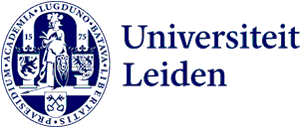This course deals with famous collections of Asian material culture in the Netherlands, and the way these were constituted. The course includes visits to various museums or special exhibitions, for example the National Museum for Ethnology, the Siebold House, the Tropenmuseum, and will visit the collections from the Rijksmuseum and Haags Gemeentemuseum, which are currently not open to the general public. In addition to assessing the nature of the collections, such as the acquisition history of the objects and the way in which collections are currently presented to the public, students are required to compose their own “virtual exhibition” in a Powerpoint presentation, explaining the reasons behind their choices and way of presentation.
Admission requirements
BA degree (or equivalent) in Archaeology or a relevant discipline.
SAP and exchange students: admission after approval by the Graduate School of Archaeology.
Learning objectives
*Knowledge of Asian material culture, as it is presented in Dutch collections: what kind of material do you find in Dutch collections, how representative are these collections; *Knowledge of the origin and history of these collections and what influence this has on the representativity of the collections; *Insight into the nature of exhibitions: what is the theme (e.g. anthropological, arthistorical, archaeological), focus and purpose of the exhibitions; *Insight into the presentation of an exhibition, students are capable of answering the following questions: how is the theme presented, at what kind of audience is it aimed and what does the exhibition attempt to achieve; *Have a critical view on the selections made by the museum with respect to the insights mentioned above (i.e. the theme, focus and purpose of the exhibitions); *Be able to formulate an well-argumented opinion on these insights (theme, focus and purpose); *The ability to apply these insights, and compile an fictitious “virtual exhibition”in a powerpoint-presentation; *Motivate and explain choices made for the “virtual exhibition”; *Be able to give a (powerpoint)presentation for fellow-students, incl. handout.
Method of instruction
Seminar and visits to collections.
Examination
“Virtual exhibition” assignment, paper and presentation; report about museums visited.
Required reading
Various articles and museum catalogues.
